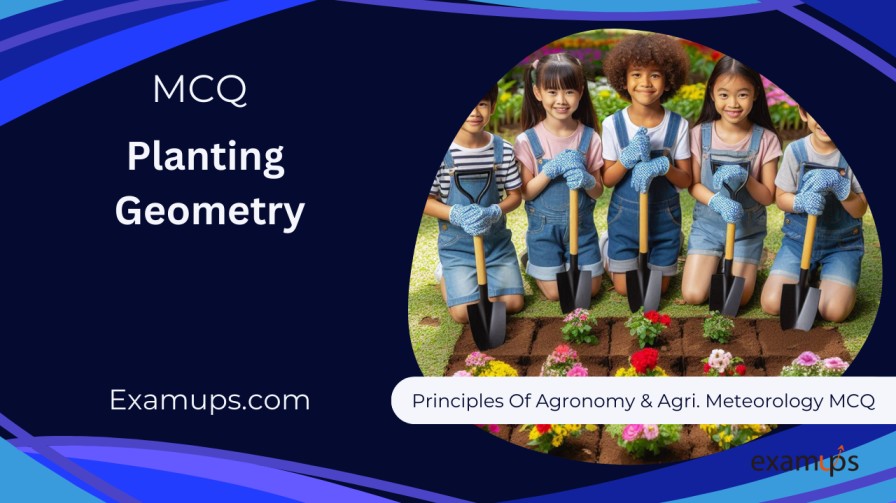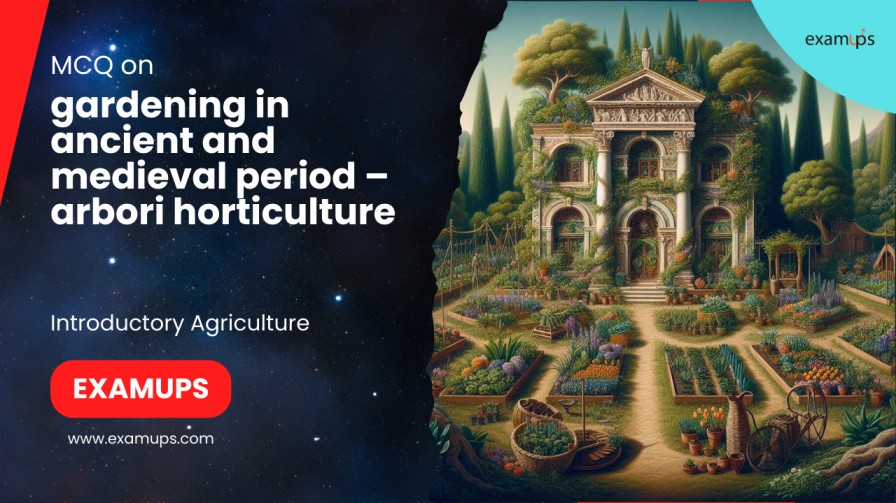MCQs on Planting Geometry like ICAR-JEF, ICAR-SRF, ICAR-NET, IBPS-AFO/SO, Pre-PG, BHU Pre-PG, IFFCO-AGT, CCI, FCI, B.sc, M.sc, etc.
Multiple-Choice Questions on Planting Geometry
1. What is competition in the context of plant growth?
a) The struggle between individuals within a population for resources when the supply is less than their combined demand
b) A race between plants to grow the fastest
c) A process to breed better plant varieties
d) A method to improve plant resilience
Answer: a) The struggle between individuals within a population for resources when the supply is less than their combined demand
Explanation: Competition in plants refers to the struggle for resources such as nutrients, light, and water when they are in limited supply compared to the combined demand of the plants in the population.
2. What is intra-specific competition?
a) Competition between different species
b) Competition within a single species
c) Competition among farmers for crop prices
d) Competition between plants and animals
Answer: b) Competition within a single species
Explanation: Intra-specific competition occurs within a single species, typically when plants of the same crop compete for resources like light, water, and nutrients.
3. What is the impact of high plant population on nutrient competition?
a) It reduces nutrient uptake
b) It increases nutrient uptake
c) It eliminates nutrient competition
d) It improves nutrient recycling
Answer: b) It increases nutrient uptake
Explanation: A higher plant population increases nutrient uptake as more plants are competing for the same pool of nutrients. However, if the population is too high, nutrient deficiencies may occur.
4. How does competition for light occur in plant populations?
a) When one plant casts a shadow on another
b) When plants compete for soil nutrients
c) When plants compete for space to grow
d) When plants compete for water
Answer: a) When one plant casts a shadow on another
Explanation: Competition for light occurs when plants start to grow and their leaves cast shadows on other plants, reducing the available light for photosynthesis.
5. What is inter-specific competition?
a) Competition within a single species
b) Competition between different species
c) Competition between plants and animals
d) Competition among different varieties of the same crop
Answer: b) Competition between different species
Explanation: Inter-specific competition occurs between different species, such as when different crops are grown in mixtures or when weeds compete with crops for resources.
6. How can plant population affect growth and yield?
a) Higher plant populations always lead to higher yields
b) Lower plant populations always lead to higher yields
c) Optimum plant population leads to balanced growth and yield
d) Plant population does not affect growth or yield
Answer: c) Optimum plant population leads to balanced growth and yield
Explanation: An optimum plant population ensures that there is sufficient space and resources for each plant to grow and yield well. Too high a population leads to competition and lower yields, while too low a population results in underutilization of resources.
7. Which factor is most likely to be affected by high plant population?
a) Soil temperature
b) Nutrient availability
c) Plant variety
d) Genetic stability
Answer: b) Nutrient availability
Explanation: High plant population increases competition for nutrients, leading to potential nutrient deficiencies if the soil’s fertility cannot support the larger population.
8. What can be a consequence of competition for water in plants?
a) Uniform growth across the field
b) Uneven plant growth and yield
c) Reduced pest problems
d) Increased soil aeration
Answer: b) Uneven plant growth and yield
Explanation: Competition for water can lead to uneven plant growth, where some plants get more water than others, causing variability in growth and yield across the field.
9. What happens when competition for light becomes severe in a plant population?
a) Increased plant health
b) Higher risk of disease and lower yields
c) Better soil structure
d) Improved seed quality
Answer: b) Higher risk of disease and lower yields
Explanation: Severe competition for light leads to mutual shading, reducing photosynthesis, and causing plant stress, which can increase the risk of disease and reduce yields.
10. What is the primary purpose of maintaining optimum planting patterns and density?
a) To minimize competition and maximize yield
b) To create uniform plant height
c) To facilitate easy harvesting
d) To improve plant aesthetics
Answer: a) To minimize competition and maximize yield
Explanation: Optimum planting patterns and density aim to minimize competition for resources and ensure that each plant has adequate space to grow, ultimately leading to better yields and healthier plants.lay crucial roles in achieving optimal stand establishment.










